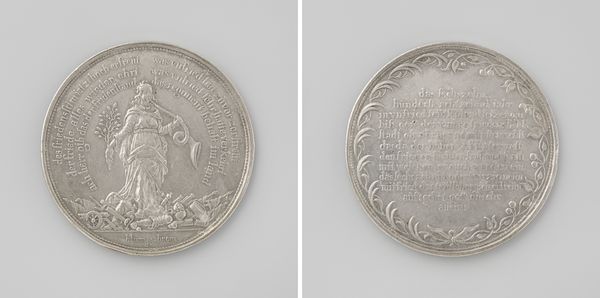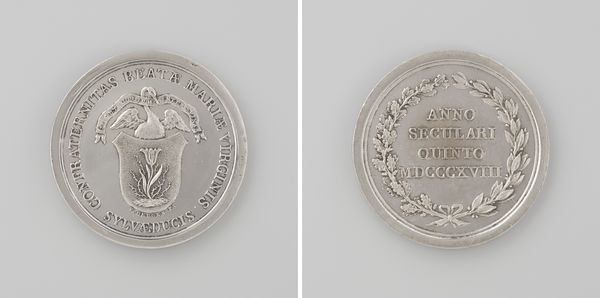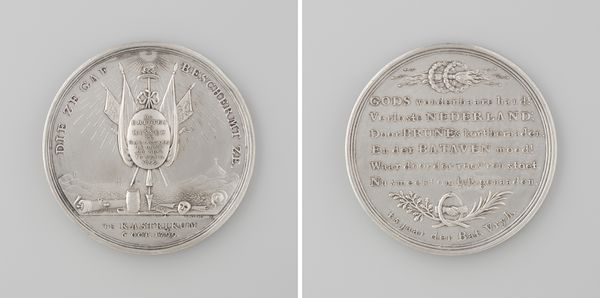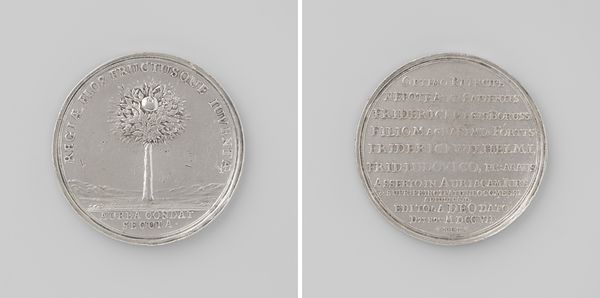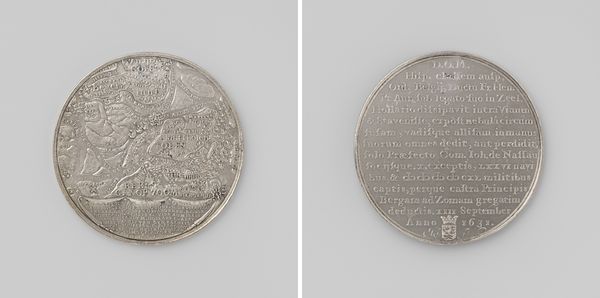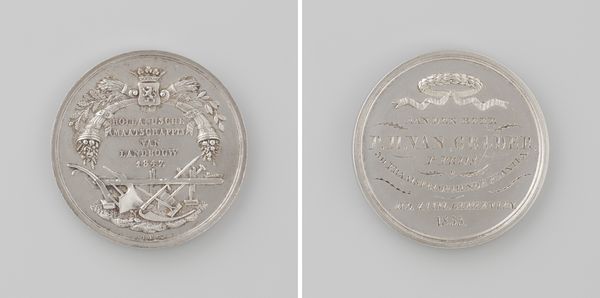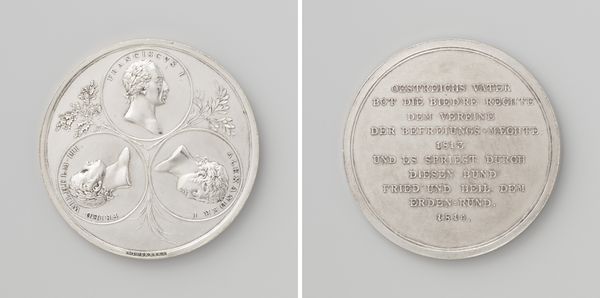
Slag bij Castricum, penning door het gezelschap "Tot nut van het vaderland" aan generaal Brune vereerd 1799
0:00
0:00
print, metal, relief, engraving
#
neoclacissism
# print
#
metal
#
relief
#
decorative-art
#
engraving
Dimensions: diameter 4.2 cm, weight 24.12 gr
Copyright: Rijks Museum: Open Domain
Editor: This medal from 1799 commemorates the Battle of Castricum, and was awarded to General Brune by a society for national betterment. It's incredibly detailed. The classical imagery is strong, but I wonder what some of these symbols meant to people at the time? What jumps out at you? Curator: Look at the way the light emanates from the Phrygian cap. It's a deliberate choice. That cap was, and remains, a powerful emblem of freedom and revolution, resonating strongly with the ideals of the French Revolution and the spirit of the Batavian Republic at that moment. Note also, the laurel wreath—an ancient symbol of victory. But ask yourself, who exactly are they celebrating here? And what are they *not* saying? Editor: So, the medal isn’t just celebrating a battle, it’s linking the general and the ideals of revolution to victory. But the flipside—is that celebrating war itself? Or the implications of liberty, freedom from the old regime? Curator: Precisely. Consider the text surrounding the image: "Guidez nous contre les Tyrans." "Guide us against the Tyrants." Who *are* the tyrants in this context? How would people from different sides of the conflict interpret those words? Editor: That's fascinating. It seems like this small object is carrying a lot of historical and cultural weight. Curator: Exactly! A simple image, yet packed with symbolism that reflects a particular worldview at a turbulent time. That cap and the laurel wreath speak volumes, carrying messages far beyond just a military victory. I see in this coin a cultural artifact reflecting a young nation trying to discover its identity, celebrating and reinterpreting symbols from the past for their modern context. Editor: I'll definitely look at these types of objects differently now. Seeing beyond the surface imagery to the layers of cultural meaning—it's like unlocking a hidden language. Curator: And it is through that hidden language, the language of symbols, that we connect to those who came before, understanding their hopes, fears, and dreams, not merely reading texts, but by experiencing symbols.
Comments
No comments
Be the first to comment and join the conversation on the ultimate creative platform.
